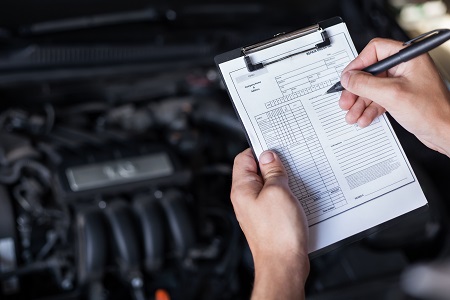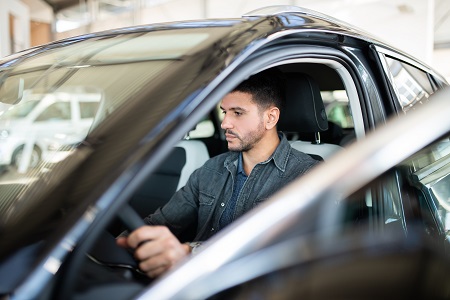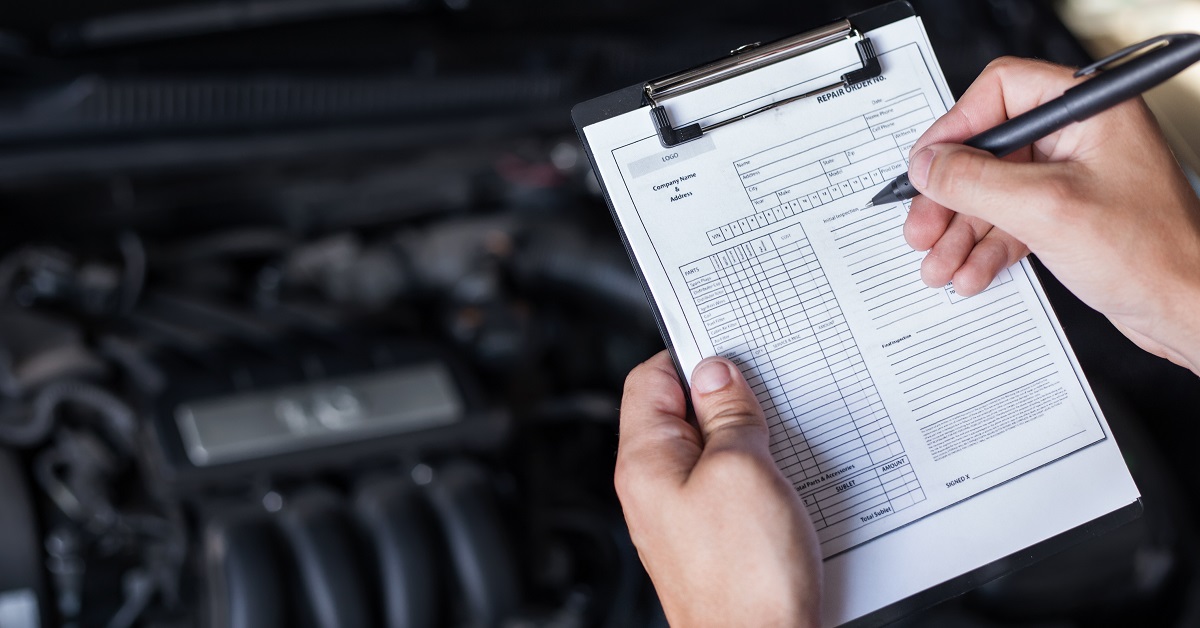Pre-Purchase Inspection Checklist
For most people, their car is their gateway to the rest of the world. There’s no getting around it. In a country as vast as the United States, cars are part and parcel to freedom of movement. Without them, a journey from Vancouver to Seattle would take days. Vancouver to Los Angeles would take weeks. And crossing the western United States would take months.
A major purchase someone can make today is their choice of car. And by far the most commonly purchased car in the United States is the pre-owned vehicle. Of the 53 million sales in 2020, just over 39 million consumers bought a second-hand car. Knowing how to spot a solid buy is a trick that comes with knowing what warning signs to look for and where to find them. Ron’s Auto and RV is here to provide you the checklist for inspecting a pre-owned vehicle before you decide to purchase it.

Inspecting the Vehicle
-
- Inspect the Car’s Exterior and Interior
Inspecting the car’s exterior is the fastest way to check for signs of damage. Allstate suggests checking body panels for paint overspray on the inside of the hood, trunk, and doors to make sure the paint is the same color, it’s the easiest way to tell if parts have been replaced from accidents or rust. If there’s rust on one side of the vehicle, the vehicle is liable to have rust on all parts.
-
- Check the Wheels
Look for the tread depth and traction. Tread depth can be measured with a penny. If you can see the tread under Lincoln’s nose than the tire must go. Traction should be level and not feathered or cupped otherwise the wheel alignment is off. In cases of uneven treads and low traction, the vehicle will need new tires, a costly repair. While inspecting the tires make sure to check the brakes, shine a light and look at the pad thickness. Practice the brakes during the drive test.
-
- Check Fluids
Make sure to check the necessary fluids to a well-running vehicle: engine oil, transmission, antifreeze and brake fluids ensure your car’s internal mechanics function smoothly.
Engine oil should appear brown and translucent. It works to lubricate the engine but can gum up other reservoirs.Transmission fluid should appear red, full. Antifreeze should be green or pink. Brake fluid can be determined by the reservoir. If the brake parts are worn, the reservoir will be lower, if it’s full then brakes might be in good shape, but it’s always best to practice braking with them during the test drive. None of these fluids should have a burning smell.
-
- Check the Belts
Inspecting the serpentine and timing belts will require a flash light. The timing belt makings sure the pistons and engine work, a worn timing belt risks engine failure and catastrophic damage. The serpentine belt winds its way through the engine block, maintaining multiple systems like the Air Conditioning, Alternator and Power Steering among others. Without it, the battery won’t charge, the AC won’t run and the steering wheel will take two bodybuilders to move.
While this mostly concerns the belts handling the inner workings of the engine, make sure to check the seat betls inside the car as well.
-
- OBD2 Reader
OBD or On-Board Display readers cost about $45 and check the internal PC for problems and warning lights. Car’s built after 1999 have a small outlet near the center console for reading the internal diagnostics. It should read zero diagnostics to reveal no problems. But to be sure wait for readiness test to pop up or scroll to the option. Anything that is supported should read complete, otherwise it will need to be rechecked again. Anything not supported is whatever.
-
- Caution: Low Mileage
Be wary of lower mileage. Common thought suggests less mileage equates to less wear-and-tear and a longer life, but infrequent driving means the rubber and plastic parts of the engine can grow brittle and break easier. Further, the drivetrain will work better and more reliably the more frequently and reliably it is actually driven. Consider how those miles were accrued, in the city or in the country? On road trips or early morning commutes.
Driving the Vehicle
-
- Check for Leaks
Before starting up the test drive, idle the car for a minute or two. Pull forward and check for any wet spots. Depending on where the leak is, you can identify there that is in the engine bay.
-
- Listen for Any Noises During Test Driving
No radio, no fans, no talking. Check the stereo before or after driving in the lot, but not while test driving. Any unusual noise that knocks, squeaks, groans or creaks presents a potential expensive repair further down the road and due diligence is a virtue before deciding on the purchase.

Researching the Vehicle
-
- Consider a Certified Pre-Owned Vehicle
Sometimes buying a car is a decision between the dealership and a private owner. Dealerships can offer more standardized sales for used cars. CPO’s are usually less than 5 years old and under 75k Miles. Generally dealers check all the major systems and recondition the vehicle. Many are offered with a limited warranty.
-
- Find the VIN
Reputable car dealerships should provide the Vehicle Identification Number (VIN) to you for free, located in the title and the vehicle history records. The NHTSA (National Highway Traffic Safety Administration) has an online VIN decoder and database for known issues and recalls so you can better learn the history of the make’s issues.
-
- Check the Vehicle History Reports
Make sure to go over the ownership, maintenance and service records. Most dealerships offer these maintenance records for free, but with the VIN or license plate # you can look for the vehicle reports over the internet for a documentation fee. Acquire a sense for the average reliability for the model. Check reviews in concert with the consumer reports. Bare in mind for four-star averages and up that for every one vocally unhappy driver there are hundreds or so more who are content and quiet. Below four-stars, the ratio of unhappy reviews can reflect more truth.
-
- Avoid Being Rushed
Don’t rush the buying process, go for a drive, do the homework, check the market, take your time. The pain of an ill-advised purchase is magnified by the importance of said purchase. Your next car is undoubtedly one of the most important purchases you can make outside of a house. Work with your personal finance manager rather than haggling with the dealership’s own. Your bank can use an auto loan calculator to come up with fair loan terms at an affordable price.
Buying A Pre-Owned Vehicle?
Ron’s Auto provides professional pre-purchase inspection services for those who want an independent mechanic’s acumen. Call us today about setting up a pre-purchase inspection for a pre-owned vehicle you are looking to purchase. If you would like to undertake this process for yourself, then enjoy our checklist below.

